Monsters
If you are a helpless baby rodent, what strikes fear into your heart more than anything else. Antelope Ground Squirrels dig their burrows in the ground, often around bushes. The entrances are often deep in the bushes as well. But you are not safe. There are monsters that crawl through the bush and may come in your burrow to eat you.
Snakes
A Gopher snake has crawled into a bush. He climbs up and over the thick, lower branches and finds a way to descend downwards to the bottom of the bush. With his forked tongue, he smells his way to his quarry.
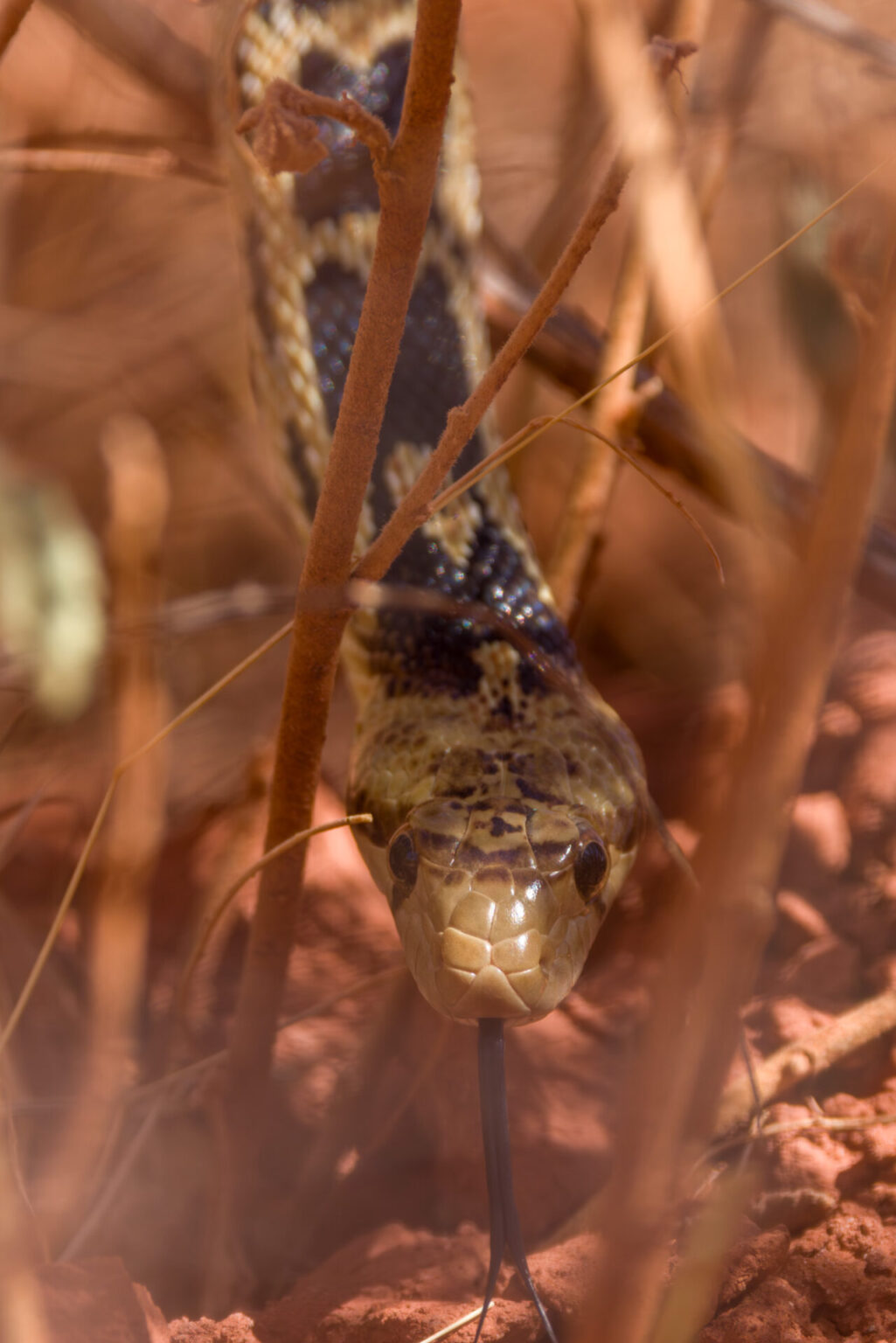
Deep in the bush, he finds an entrance to a burrow. In he goes. Eventually, all but a few inches of his tail is in the hole as he explores for something to satisfy his hunger. What did he find in there? Only the Gopher snake and his potential prey knows.
Gila Monsters
But there are even more scary monsters to be afraid of. For the past six years since moving to St. George, my wife and I have looked for Gila Monsters everywhere they might be. Hiking many miles, checking in cracks in rocks, and surveying cliffs and rock faces with our long lenses from a distance, we have searched for one. The photo below of my wife below a living room sized balanced rock, shows the kind of places we searched. But it was all for naught until finally, this Spring, determined to finally achieve the goal, we found them.
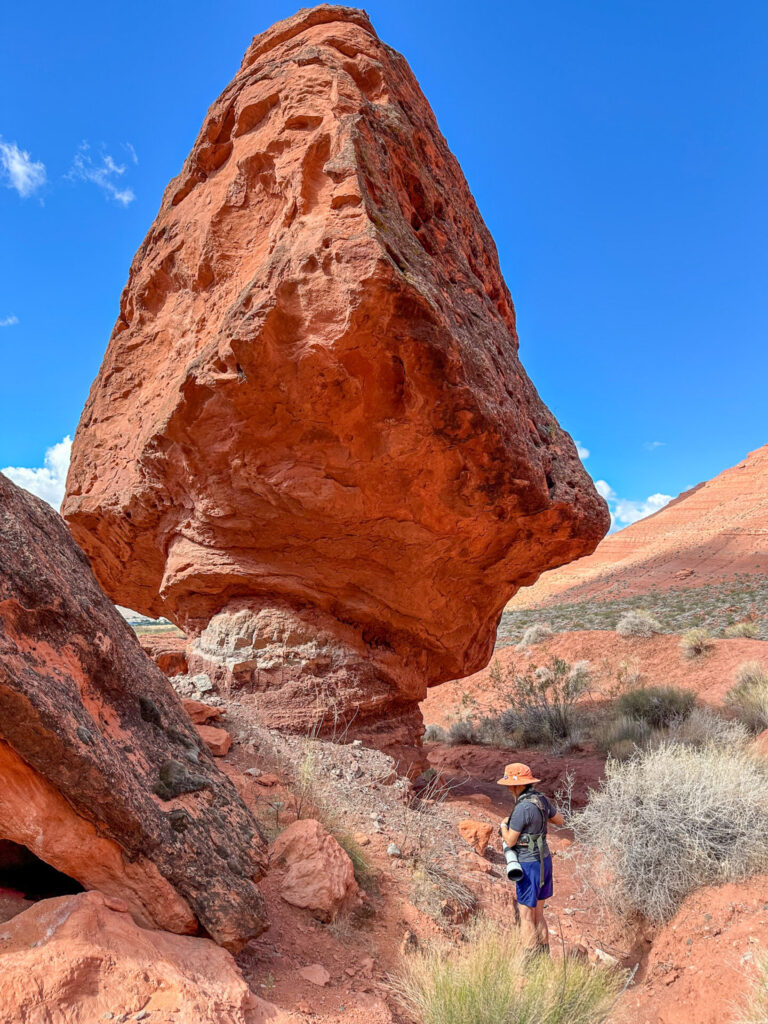
First Sighting
Our first sighting this Spring, came unexpectedly when we were returning from a search up a wash after having not found anything. Suddenly, a Gila Monster appeared in our view only around 10 feet away. He was only about 9 – 12 inches long from nose to tail tip. But by the time we saw him, he was already ducking into a bush. He hunkered down in the bush allowing us to take photos of his fat tail.
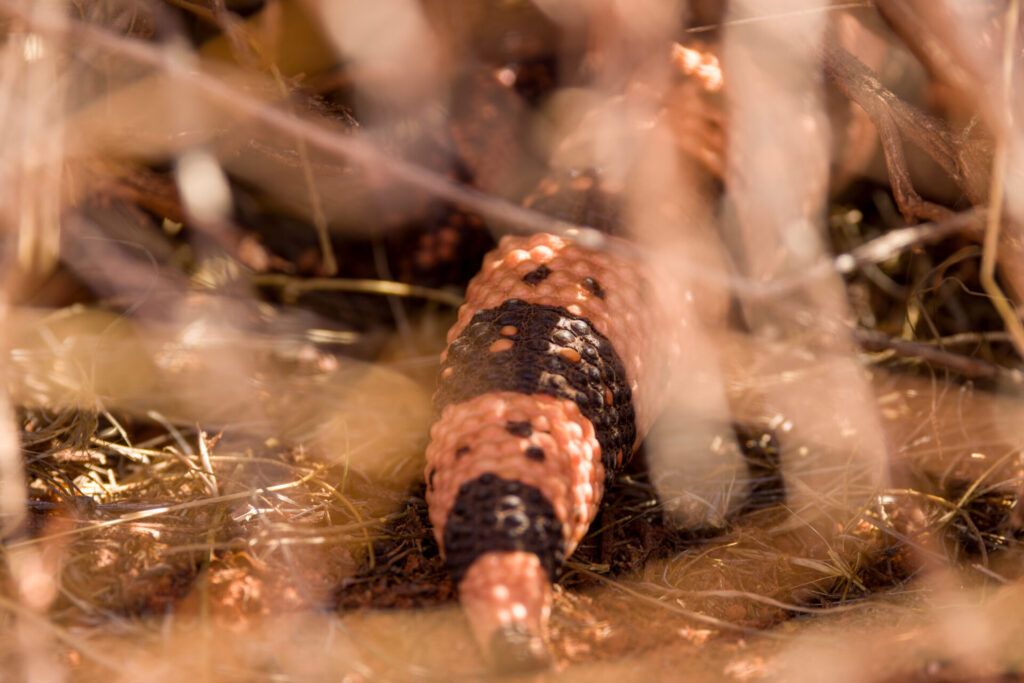
Gila Monsters store fat in their tails to live off of while they spend 95 to 98% of their time in their burrows, so a fat tail implies a healthy animal. That also explains why they are so rare to see. They only need to come out of their burrows a few times a year to eat and look for mates.
Hoping he would eventually come out of the bush, we hid and waited. Nothing. Examining the bush after a while, we found a hole in the ground under the bush. He must have crawled into the hole. Was this his burrow? Or is he searching for food in another animal’s burrow?
Second Sighting
Another day out searching, a few passersby suddenly called out “Gila Monster!”. Rushing over, we again found another tail in another hole. Although we were finally finding them, we wondered if we would ever get a photo of one showing more than just the tail.
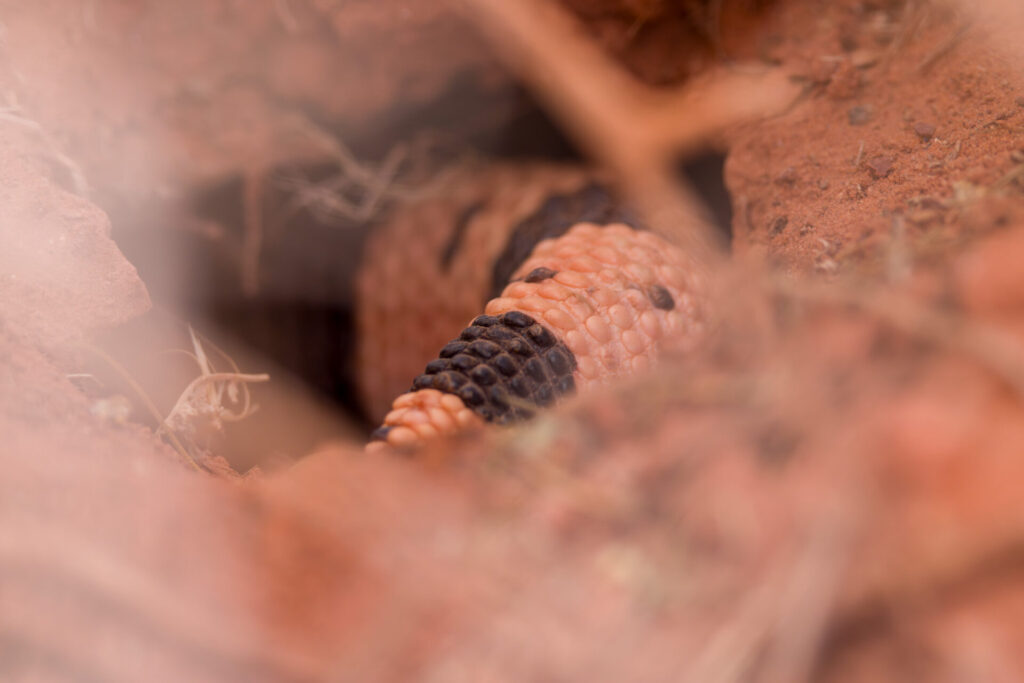
The Whole Enchilada
Then it happened! Again, a Gila Monster suddenly appeared in full view right next to me! In disbelief, I hurriedly grabbed a series of photos while calling to my wife to come look.

This individual was quite large. I estimate 18 – 20 inches from nose to tail tip. Of course, estimations of size are notoriously inaccurate unless you have something good to compare to. Then, what did he do after being spotted? He went straight into a bush. But this time, he stayed in sight. Again, we patiently waited for him to come out.
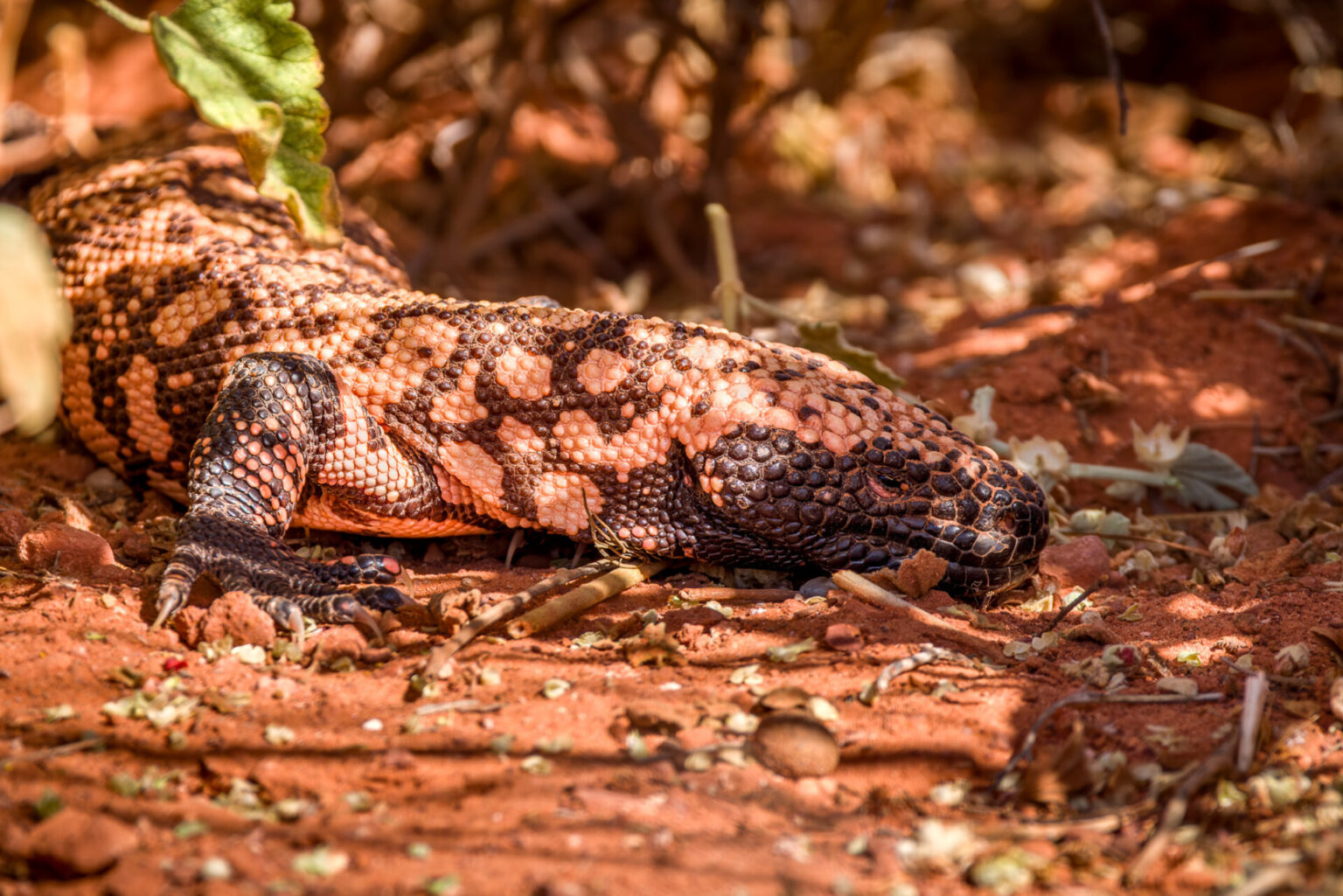
Eventually, he began to come out. Tentatively at first, he sticks his head and forelimbs out a little. Then, slowly and cautiously, he moves a little further into view.

Then he walks a few feet to another bush and pauses in the shade before moving on into the open.
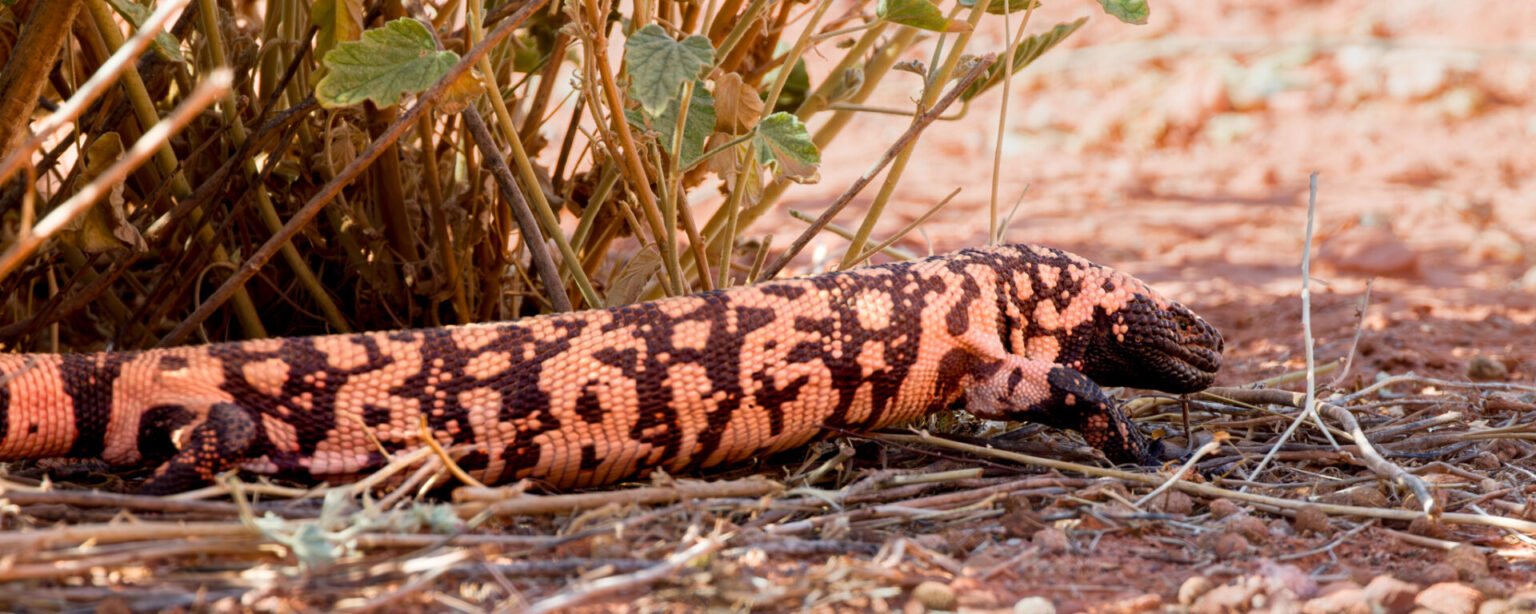
Soon, he is off again. Out in the open, he actually turns and starts walking in my direction.

But I circle around so I can view him fully lit by the sun.
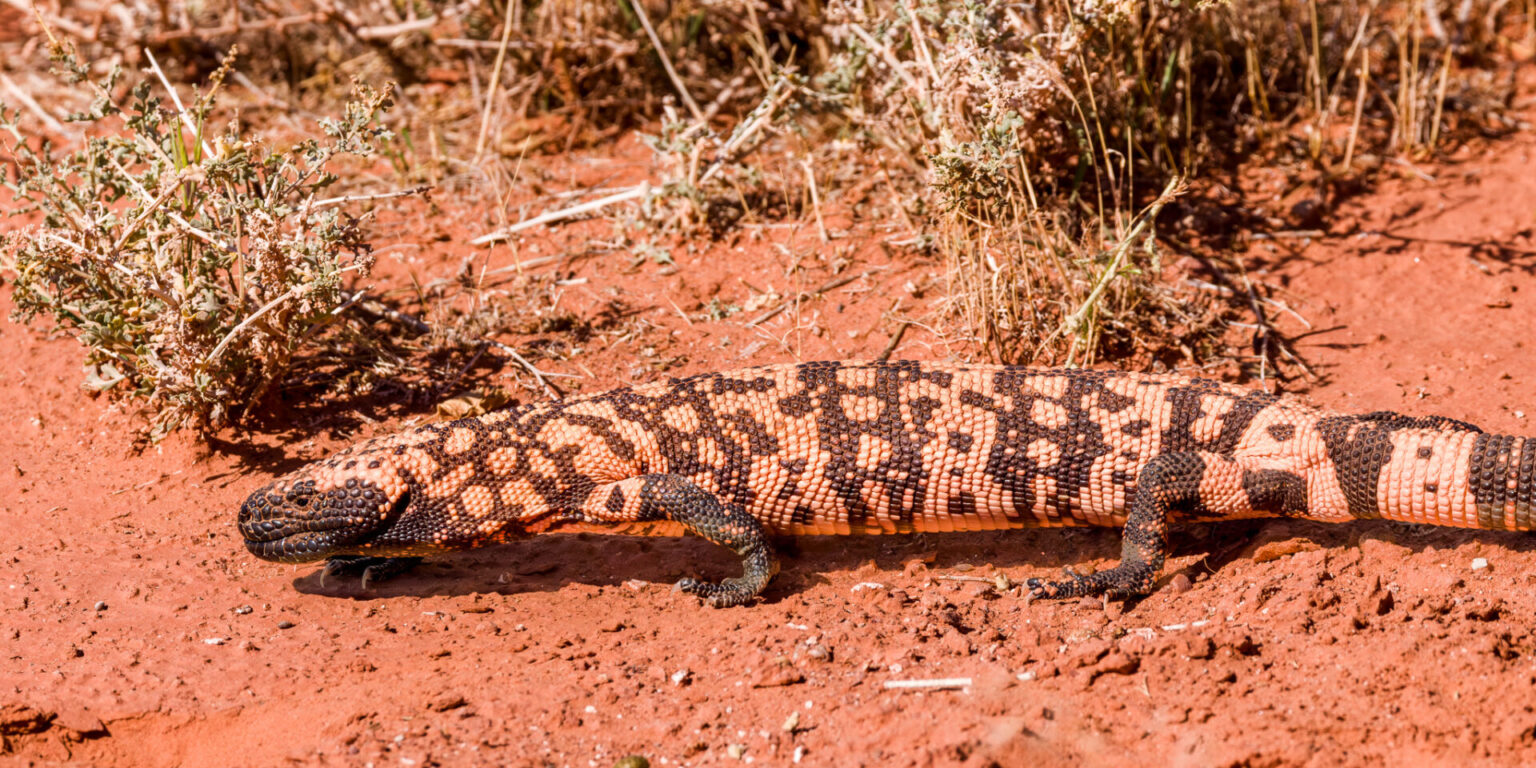
Below is a short video of him showing how he walks. Note that they do not move fast. Their top speed is only about one and a half miles per hour.
Satisfied with the great view we got, we decided to leave him in peace so he could carry on with his life, searching from bush to bush for food. Then, a few hundred yards down the trail, we came across a second Gila Monster.
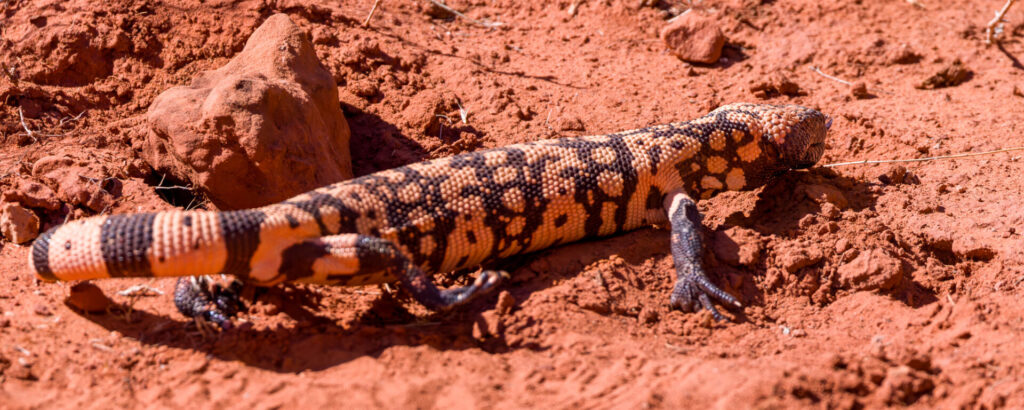
This one was significantly smaller, perhaps only 12 inches nose to tail tip. He didn’t stay visible long, however, before disappearing into the thorny pads of a Prickly Pear Cactus. After getting one final shot of him looking out from under the cactus, we decided to call it a day.
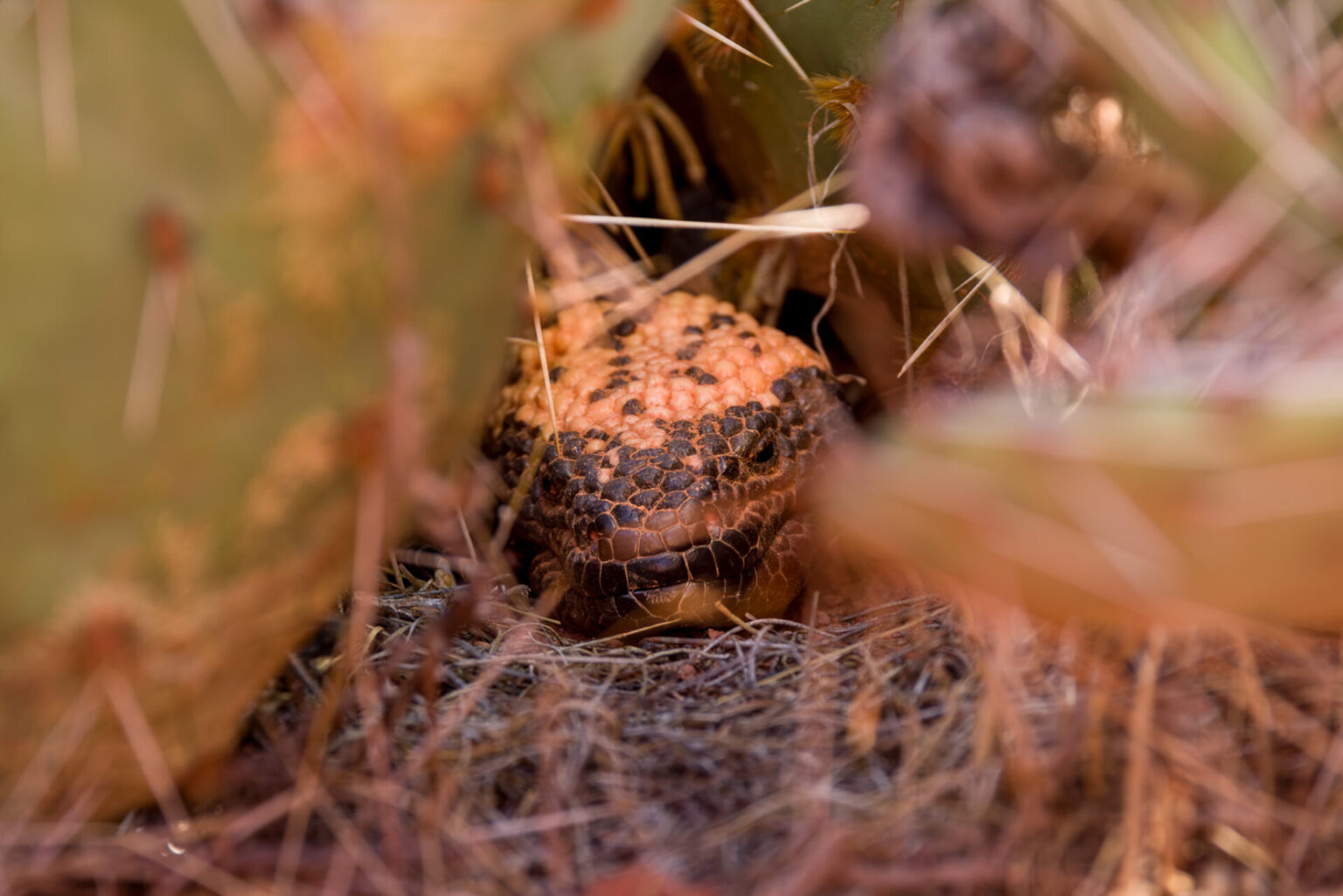
On the way back, we get one last look at a large Tortoise eating leaves. No monster here.
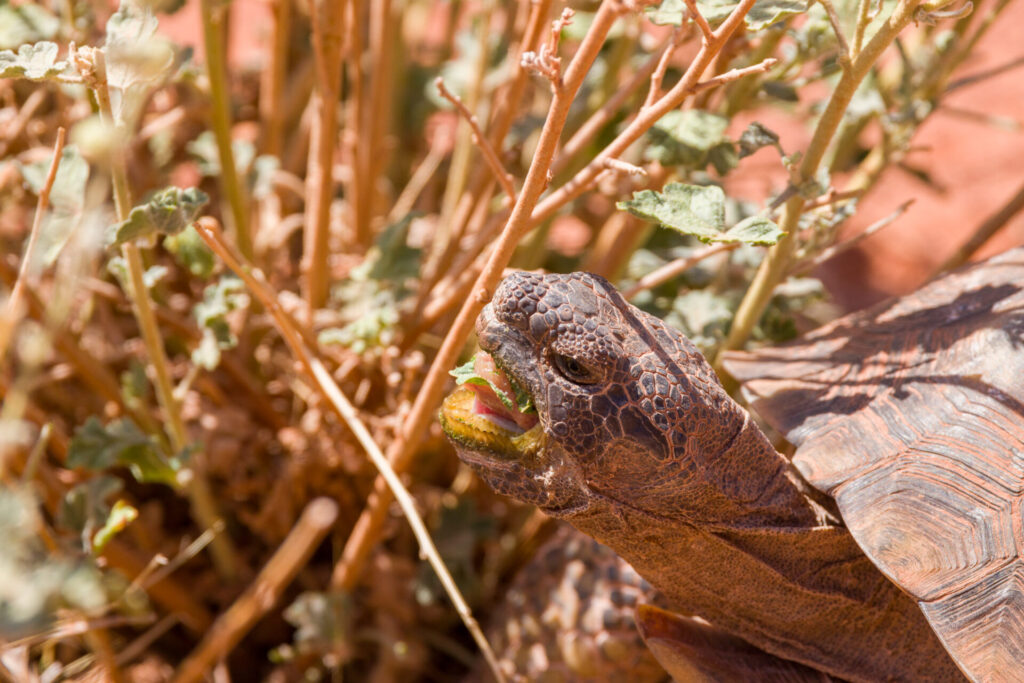
Notes About These Monsters
It should be noted that the monsters described here are not really dangerous animals to humans. Gopher snakes and quite a few other snakes are completely harmless, with the notable exception of Rattlesnakes. Treat them all with respect, keep your distance, and you should be safe. Rattlesnakes will often warn you to stay away by rattling their tails before you even see them. Kingsnakes are especially good to have around your house because they will eat Rattlesnakes. This guide from the Utah Division of Natural Resources has good safety information regarding Rattlesnakes.
Gila Monsters have a reputation for being dangerous mostly because they are venomous. If they bite you, they will often bite hard and don’t let go. I hear it is extremely painful if you get bitten by one. But they don’t go after humans, and as noted above, their top speed is only one and a half miles per hour. You have to really work at annoying one to get bitten. Again, treat them with respect and you will be perfectly safe. This link provides a good set of facts about Gila Monsters.
Lastly, if you are planning to take photos of dangerous animals like this Rattlesnake photo I took a couple years ago, use a very long lens. You can purchase a high-quality print of this photo by following this link.
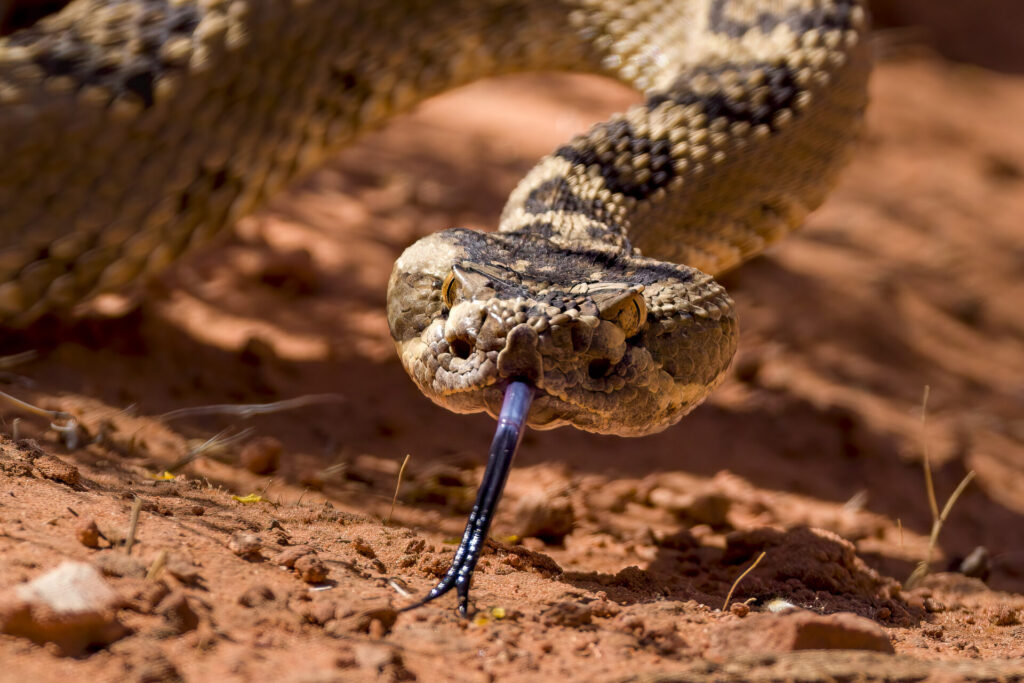

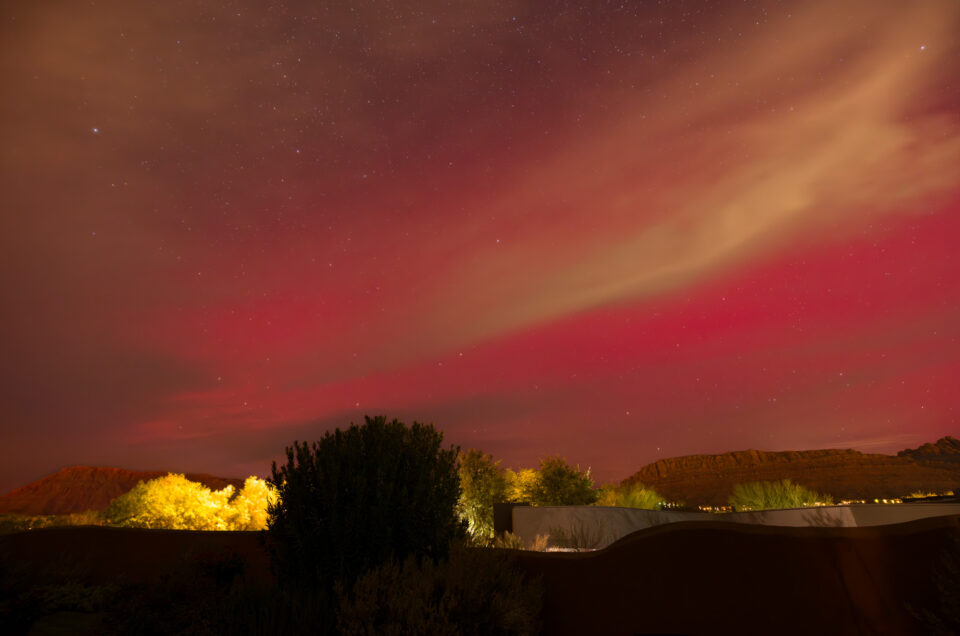
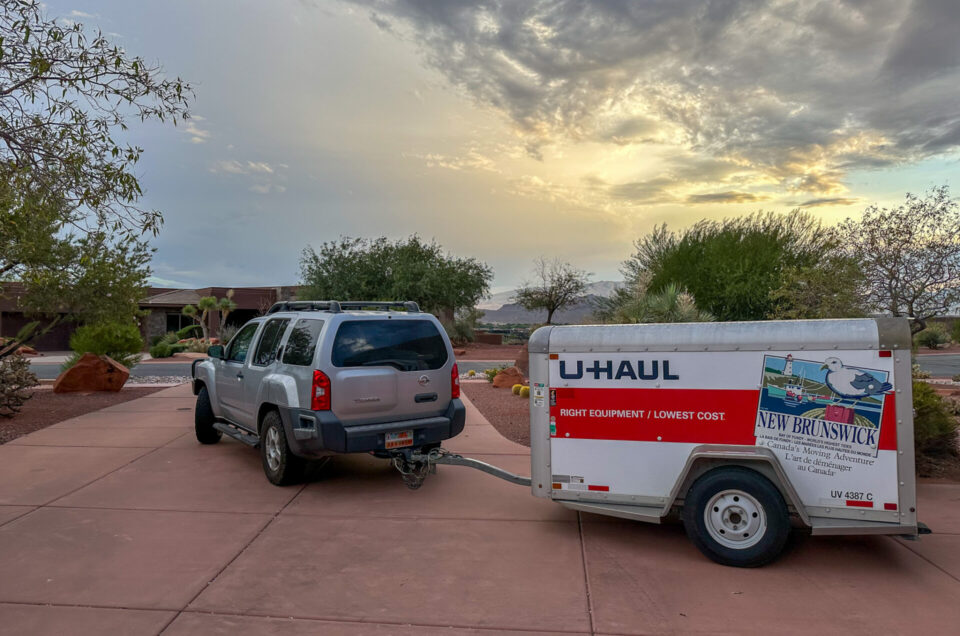
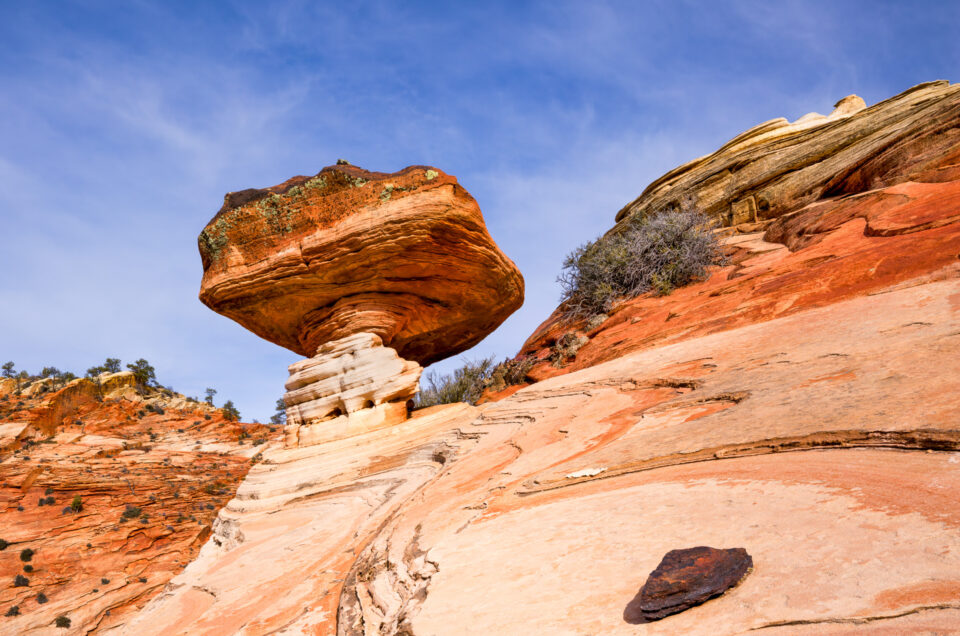
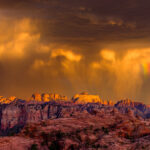
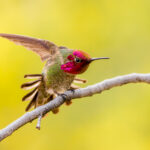
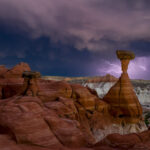

Leave a reply